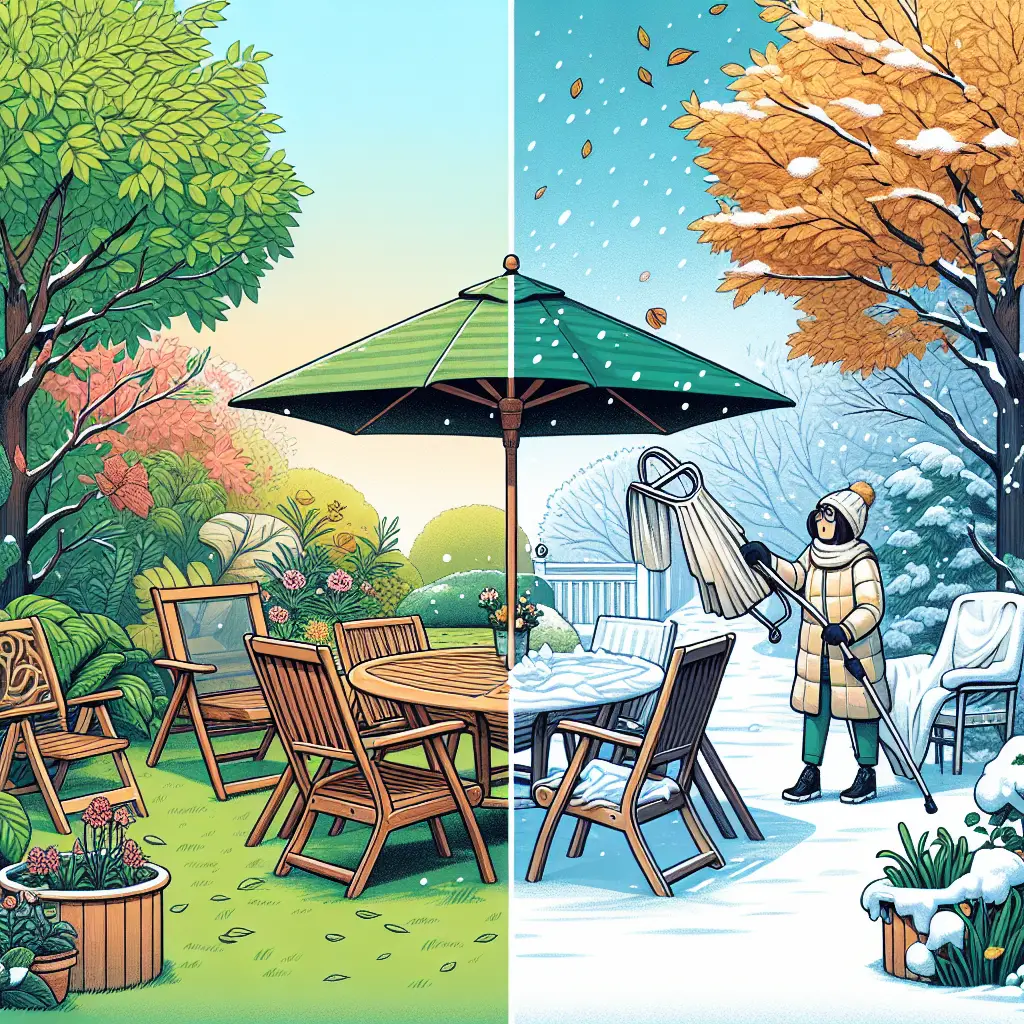When Does Outdoor Furniture Need to be Covered?
If you’re an outdoor enthusiast or a gardening aficionado, you know that creating a stunning backyard oasis often includes investing in some quality outdoor furniture. But how do you ensure that your carefully chosen pieces withstand the test of time and the fickleness of Mother Nature? In this essential guide, we navigate the when, why, and how of covering your outdoor furniture, a step that’s often overlooked until it’s too late.
Why Covering Outdoor Furniture is a Must-Do
Outdoor furniture is designed to be durable, but the elements can be harsh and unforgiving. Sun, rain, wind, and even the occasional bird can wreak havoc on your furniture. According to experts at Consumer Reports, the longevity of your outdoor setup is greatly determined by your proactive measures to protect it.
The Optimal Time to Cover Your Outdoor Furniture
Before the Rain: It sounds like a no-brainer, but the best time to cover your furniture is before moisture has a chance to settle in. Moisture can lead to mold and mildew, especially in cushion fabrics. Make it a habit to check the weather forecast and plan accordingly.
During the Off-Season: When the seasons change and you find yourself spending less time outdoors, that’s your cue. Covering your furniture during the winter months is critical if you live in an area that sees snow, ice, or even extended periods of soggy conditions.
After Cleaning: Give your furniture a good clean before covering it for prolonged periods. This rids the surface of any dirt and debris which might otherwise cause scratches or become ground into fabrics, making them harder to clean later on.
UV Protection: Much like our skin, outdoor furniture needs protection from the sun’s rays. Over time, UV light can fade and weaken materials, so covering them during peak sunlight hours can extend their vibrant appearance.
When it May Not Be Necessary to Cover Outdoor Furniture
Not every weather forecast requires a scramble to cover your outdoor kingdom. Here are a few scenarios where you might skip this chore:
- Quick-Drying Weather: For quick-passing summer showers followed by sunshine and moderate temperatures, it may not be essential to cover your furniture. The sun will likely take care of the moisture.
- High-Quality Materials: Some modern outdoor furnishings are made with high-tech, weather-resistant materials that are less prone to damage. Items made with poly-resin, teak, and stainless steel often boast high resilience to the elements.
Considerations for Different Types of Outdoor Furniture
Your game plan for covering furniture might vary depending on what it’s made of; here’s a quick primer:
Wood: Wood furniture requires careful attention, particularly softer woods like cedar or pine. Make sure the furniture is treated or sealed before covering to prevent moisture from getting trapped.
Metal: While aluminum is resistant to rust, iron and steel are not as forgiving. Keep them covered to prevent oxidation, especially if you notice chipping in the protective paint or coating.
Plastics and Synthetics: These are often robust to weather conditions but cover them to avoid discoloration and brittleness from sun exposure.
The How-to’s of Properly Covering Outdoor Furniture
Choose the Right Covers: Opt for covers designed specifically for outdoor furniture. Look for durable, breathable, and water-resistant covers. The Spruce offers fantastic recommendations for top-rated covers.
Secure the Covers: A gust of wind should not send your covers flying. Choose ones with ties, elastic hems, or some other method of securement.
Allow for Air Circulation: Prevent mold by ensuring there’s enough air circulation under the cover. Some covers come with built-in vents; if not, avoid airtight seals around your furniture.
Tools and Resources
Ready to invest in covers for your furniture? Websites such as Wayfair and Home Depot have myriad options that can suit just about any furniture style or size.
Conclusion
Your outdoor furniture is not just a purchase; it’s an investment in your backyard paradise. Covering your furniture might seem like a trivial task, but it is a critical aspect of maintenance that could save you a lot of headaches and money in the long run. By identifying the right time to cover your outdoor pieces, using the appropriate covers, and ensuring they’re secured properly, your furniture will remain pristine, functional, and ready for seasons of enjoyment.
Don’t let the elements dictate the lifespan of your outdoor furnishings. Be proactive, cover up, and rest easy knowing you’ve done your part to protect your slice of open-air heaven.

